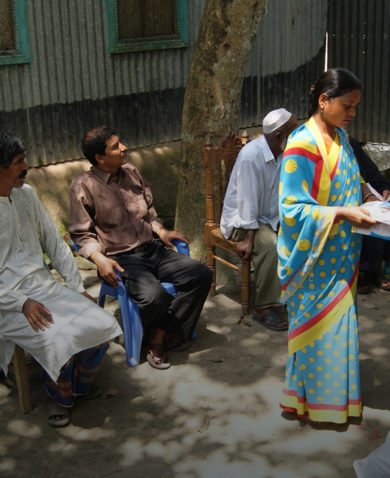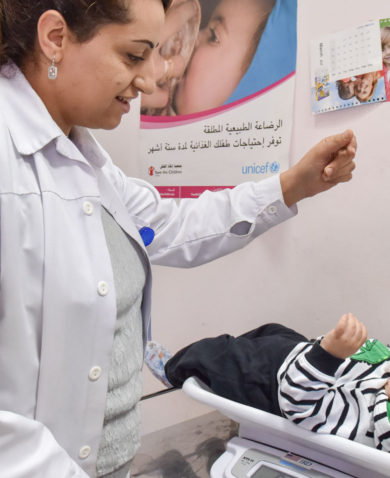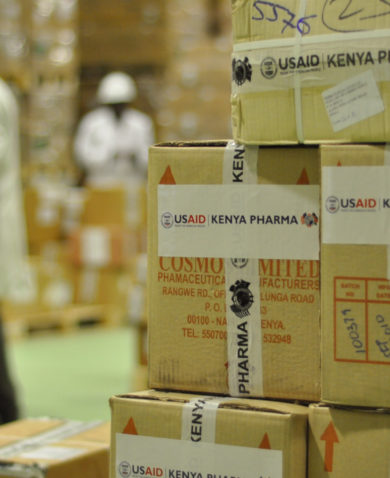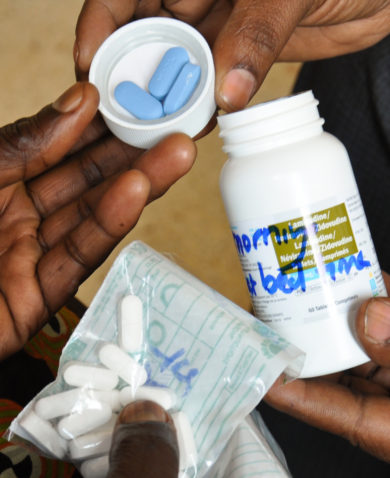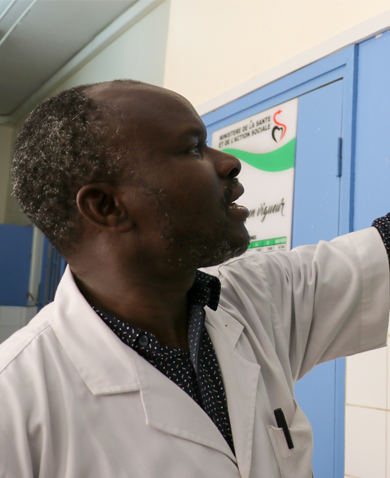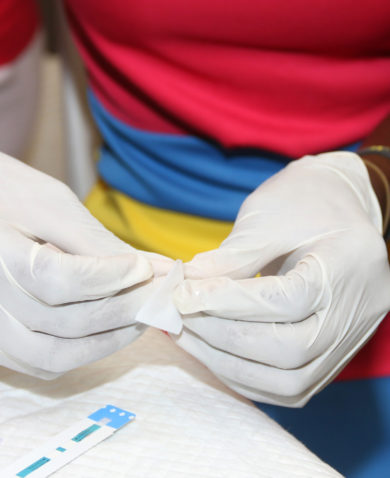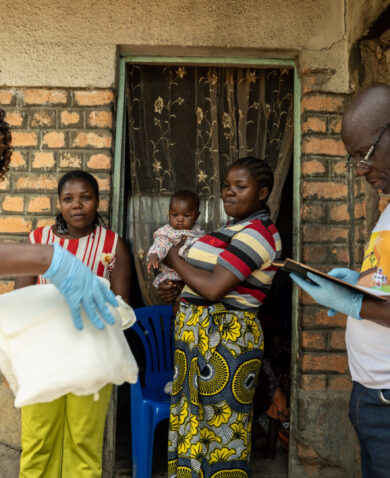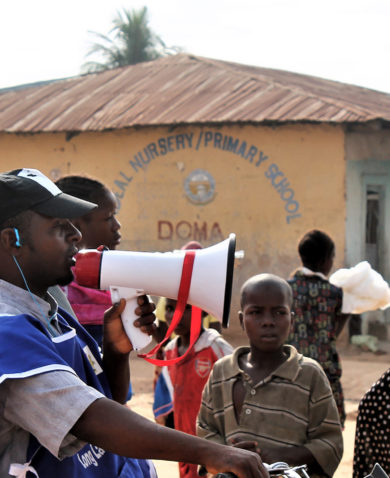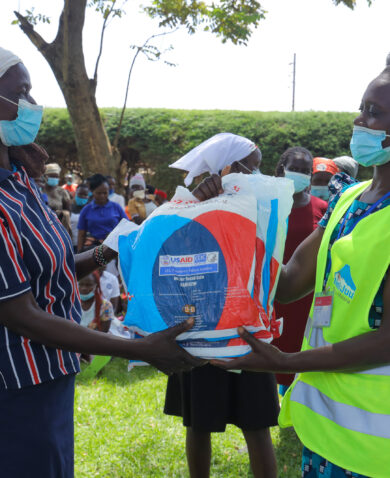
Chemonics News
News: GHSC-PSM’s Latest Report Shows Strong and Steady On-time Delivery Rates, Expansion of In-country Presence to 33 Field Offices
September 19, 2018 | 3 Minute ReadThe most recent quarterly report of the USAID Global Health Supply Chain Program- Procurement and Supply Management (GHSC-PSM) project, implemented by a Chemonics-led consortium, shows the project achieving strong and steady on-time delivery of lifesaving health commodities, expanding its in-country presence to 33 field offices, and meeting global health objectives through its support for a new first-line antiretroviral drug (ARV) regimen.
The USAID GHSC-PSM project recently published a report highlighting the project’s achievements in the third quarter of FY2018 (April 1 to June 30, 2018).
GHSC-PSM remains committed to operating a global supply chain that is focused on a safe, reliable, and continuous supply of life-saving health commodities to those who need them most. On the crucial metric of on-time delivery (OTD), GHSC-PSM achieved an average rate of 73 percent for the second quarter in a row, even as the value of those deliveries increased. In June 2018, the project achieved 82 percent OTD and reduced the backlog of late orders to 3 percent of annual volume, which is under the target of 5 percent. Over the life of the project, GHSC-PSM has procured more than $1.35 billion in health commodities that have provided more than 2.9 million person-years of HIV treatment, helped treat nearly 99 million infections from malaria, and provided 33 million couple-years of contraceptive protection.
Below are some additional highlights from the report.
Saving Money through Strategic Sourcing
In the third quarter, GHSC-PSM continued to implement strategic sourcing strategies to reduce costs and improve efficiency. Strategic planning and sourcing initiatives ensure cost-effectiveness and a steady supply of safe, reliable, and high-quality health commodities.
GHSC-PSM successfully negotiated long-term agreements with four vendors of voluntary medical male circumcision kits, which are expected to cut manufacturing lead times by 30 percent and save up to $1.2 million in the next year. Additionally, GHSC-PSM is finalizing new contracts to support firm-fixed pricing for ARVs, which will streamline the ordering process and improve the project’s ability to procure and deliver these commodities on time.
The project also released a solicitation for a strategic contract with wholesalers, covering 823 standard laboratory catalog items. This effort will reduce time for the goods to reach patients and streamline the ordering process. Moreover, between January and June, GHSC-PSM negotiated and reduced viral load and early infant diagnosis prices per test on routine orders in three countries and achieved an accumulated savings of more than $620,000.
First Deliveries of New and Improved Treatment for HIV Reached Nigeria, Rwanda, and Zambia this Quarter
At last year’s 72nd annual United Nations General Assembly, a breakthrough pricing agreement was announced to expand the availability of tenofovir, lamivudine, dolutegravir (TLD), an effective, affordable, single-pill HIV treatment to public sector purchasers — like GHSC-PSM — in low- and middle-income countries. Since then, there has been a global push to accelerate access to TLD as the preferred first-line treatment for HIV.

TLD delivered in Nigeria. Photo credit: Anthony Abu, GHSC-PSM
Furthermore, based on guidance from the World Health Organization on the use of TLD in women of reproductive age, GHSC-PSM supported countries in reassessing and, in some cases, revising their TLD transition plans. GHSC-PSM quickly adjusted procurements to ensure continued availability of other ARVs for use by HIV patients. This was also a popular topic at the recent 22nd International AIDS Conference, held in Amsterdam from July 23 to July 27, 2018.
Limiting Risk and Increasing Efficiency through Global Standards
GHSC-PSM has made significant progress in incorporating global standards throughout the supply chain to increase efficiency, reduce costs, and improve end-to-end data visibility. Adoption of global standards has become a critical part of the entire program and has been a strategic enabler of supply chain efficiency and effectiveness.

First African Global GS1 Healthcare Conference. Addis Ababa, Ethiopia. Photo credit: GS1Global Office
Although multinational manufacturers are starting to implement global standards on pharmaceutical labeling, local manufacturers of health products are at risk of being left behind because they lack the human resources and technology to meet these requirements. In Q3, GHSC-PSM gathered primary research from GS1 conferences in Bogota, Colombia, and Addis Ababa, Ethiopia (see photo below), and from interviews of local manufacturers and GS1 representatives. Based on this research, GHSC-PSM developed guidance for policymakers and local manufacturers to come up with solutions to support local manufacturers to adopt global standards. More information about the project’s work to implement and promote global standards can be found here.
To learn more about these and other activities, check out the full GHSC-PSM FY2018 Quarter 3 report.


















